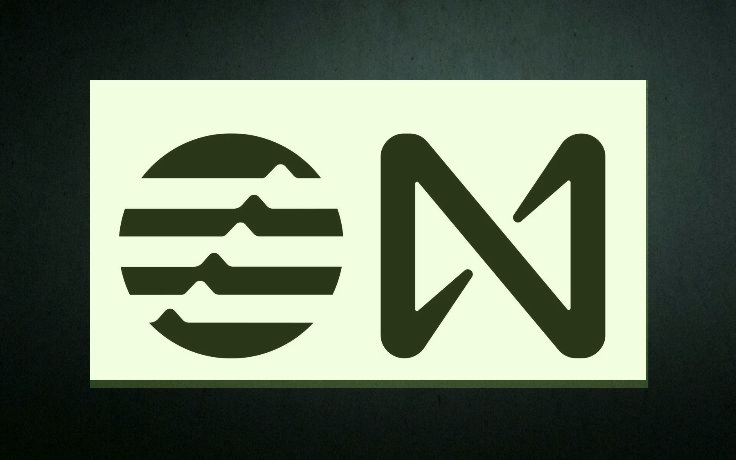[GUEST ACCESS MODE: Data is scrambled or limited to provide examples. Make requests using your API key to unlock full data. Check https://lunarcrush.ai/auth for authentication information.]  Abdullahi_🌐 [@Dlawinweb3](/creator/twitter/Dlawinweb3) on x 1610 followers Created: 2025-07-18 12:11:52 UTC State Sharding or Block-STM. How are these two folks Solving their Blockchain Scalability? We all know a Blockchain will definitely grow so as blockchains grows,they struggle to handle more users,apps,and transactions all at once. So to fix this,different projects are coming up with new ways to scale. Two popular approaches are used by NEAR Protocol and Aptos and they take very different paths. As always I will start with Near to be fair 😆 So NEAR uses a method called state sharding, Imagine a blockchain as a big highway so when it gets too crowded,NEAR builds more lanes (called shards). Each shard handles a part of the total traffic,so more cars (transactions) can move at the same time. This approach is called horizontal scaling but it can keep adding more lanes as needed. NEAR’s system is designed to split up work across many computers, so the network grows stronger as more users join. It’s great for long-term growth,but it's technically complex, especially when apps on different shards need to talk to each other. On the other hand,the boss I will say,Aptos takes a different route with a system called Block-STM. Instead of building more lanes like Near,Aptos improves the speed of the existing road. Think of it like having many people working on one task at the same time, but in a smart way. These workers guess what they can do in parallel and only fix things if there’s a mistake. This is called parallel execution. This also allows Aptos to process many transactions very quickly,even within a single block. It’s more like vertical scaling,where you supercharge one computer instead of spreading the work across many. In short,NEAR breaks things into smaller pieces and spreads them out while Aptos keeps things together but runs them faster with clever execution. TBH,Both are trying to solve the same problem,making blockchains faster and ready for mass use but they’re just doing it in totally different ways. NEAR bets on spreading the load, and Aptos bets on optimizing performance. So, which one will I support? You know what my answer is to be fair 😆. So I will say it depends actually,If you're building something that needs global reach and long-term scaling,Aptos might be the better fit. If you need fast,complex apps that rely on lots of interactions, Aptos is what I suggest too. Both are exciting,and both are pushing blockchain tech forward in their own way.  XXX engagements  **Related Topics** [near protocol](/topic/near-protocol) [web3](/topic/web3) [protocol](/topic/protocol) [blockchain](/topic/blockchain) [Post Link](https://x.com/Dlawinweb3/status/1946181122162905158)
[GUEST ACCESS MODE: Data is scrambled or limited to provide examples. Make requests using your API key to unlock full data. Check https://lunarcrush.ai/auth for authentication information.]
 Abdullahi_🌐 @Dlawinweb3 on x 1610 followers
Created: 2025-07-18 12:11:52 UTC
Abdullahi_🌐 @Dlawinweb3 on x 1610 followers
Created: 2025-07-18 12:11:52 UTC
State Sharding or Block-STM.
How are these two folks Solving their Blockchain Scalability?
We all know a Blockchain will definitely grow so as blockchains grows,they struggle to handle more users,apps,and transactions all at once.
So to fix this,different projects are coming up with new ways to scale.
Two popular approaches are used by NEAR Protocol and Aptos and they take very different paths.
As always I will start with Near to be fair 😆
So NEAR uses a method called state sharding, Imagine a blockchain as a big highway so when it gets too crowded,NEAR builds more lanes (called shards). Each shard handles a part of the total traffic,so more cars (transactions) can move at the same time.
This approach is called horizontal scaling but it can keep adding more lanes as needed.
NEAR’s system is designed to split up work across many computers, so the network grows stronger as more users join. It’s great for long-term growth,but it's technically complex, especially when apps on different shards need to talk to each other.
On the other hand,the boss I will say,Aptos takes a different route with a system called Block-STM.
Instead of building more lanes like Near,Aptos improves the speed of the existing road. Think of it like having many people working on one task at the same time, but in a smart way. These workers guess what they can do in parallel and only fix things if there’s a mistake. This is called parallel execution.
This also allows Aptos to process many transactions very quickly,even within a single block. It’s more like vertical scaling,where you supercharge one computer instead of spreading the work across many.
In short,NEAR breaks things into smaller pieces and spreads them out while Aptos keeps things together but runs them faster with clever execution.
TBH,Both are trying to solve the same problem,making blockchains faster and ready for mass use but they’re just doing it in totally different ways. NEAR bets on spreading the load, and Aptos bets on optimizing performance.
So, which one will I support?
You know what my answer is to be fair 😆.
So I will say it depends actually,If you're building something that needs global reach and long-term scaling,Aptos might be the better fit. If you need fast,complex apps that rely on lots of interactions, Aptos is what I suggest too.
Both are exciting,and both are pushing blockchain tech forward in their own way.

XXX engagements
Related Topics near protocol web3 protocol blockchain